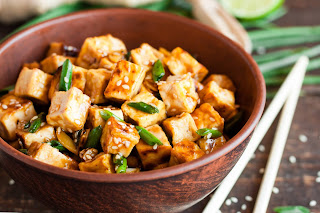To Make This Tofu, Start by Burning Toxic Plastic
The push for Zero Waste in California has led many municipalities to partner with waste diversion programs that keep our recycling out of the local landfill by sending off our plastics to nations where it is "economically viable" to recycle. The hard truth is that this form of recycling, in terms of burning plastic, is that it has a great negative impact on the environment.
In Richard C. Paddock's November 14, 2019, New York Times article titled "To Make This Tofu, Start by Burning Toxic Plastic", he shows how recycling programs in the United States inadvertently lead to extreme environmental pollution in other nations. His story features how in commercial tofu kitchens in Tropedo, Indonesia, tofu is processed using boilers fueled by burning plastic. Much of this plastic makes its way to Indonesia through local recycling programs in the United States, carried on cargo tankers burning caustic, polluting coal-tar.
Paddock decries the toll on human health of our US waste diversion programs. In these tofu kitchens, the smoke and ash created by burning plastics has far-reaching consequences, mainly that the eggs laid by chickens in the village have extremely high and dangerous levels of dioxins, a toxin known to cause cancer, birth defects and Parkinson's. As a main food source, locals eating these eggs are unknowingly ingesting dioxins.
As consumers, I feel that we have a right to make more informed decision when disposing of our waste. My main takeaway from stories like these is that we need a greater level of transparency in terms of our local recycling practices. Just as there are products marked with warning labels or fair-trade labels, we need some type of system to categorize recycling programs by measuring their impact on humans and the environment. Let me know what you think about this idea. Would it change how you dispose of your waste if you knew how it would impact others?



Comments
Post a Comment